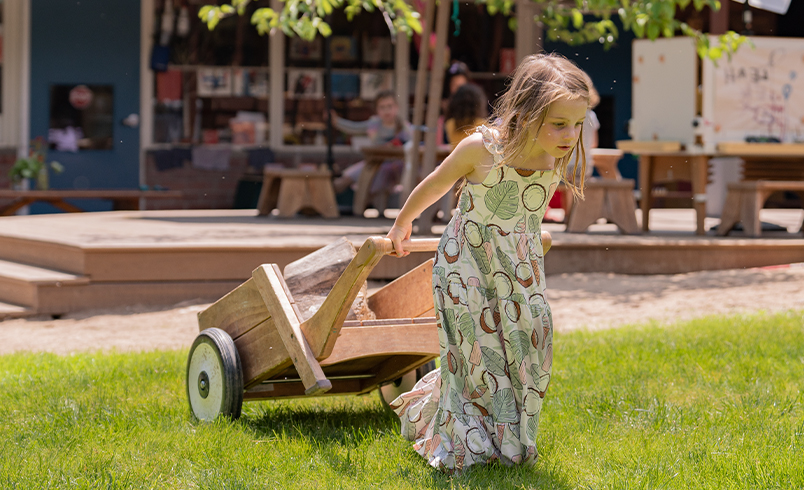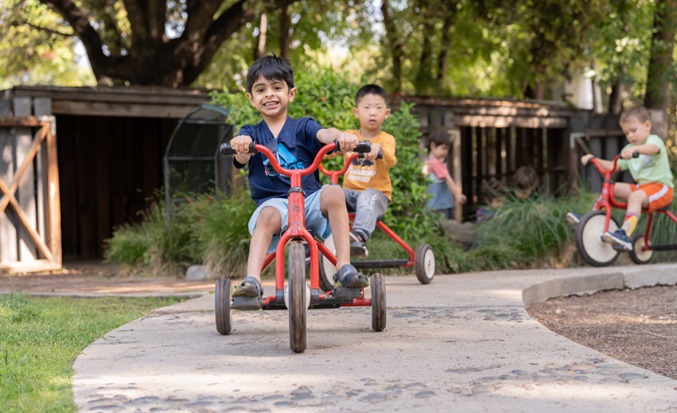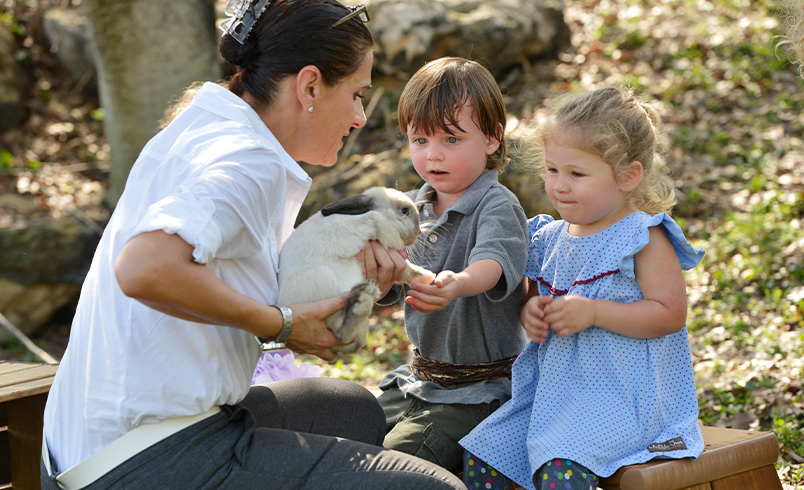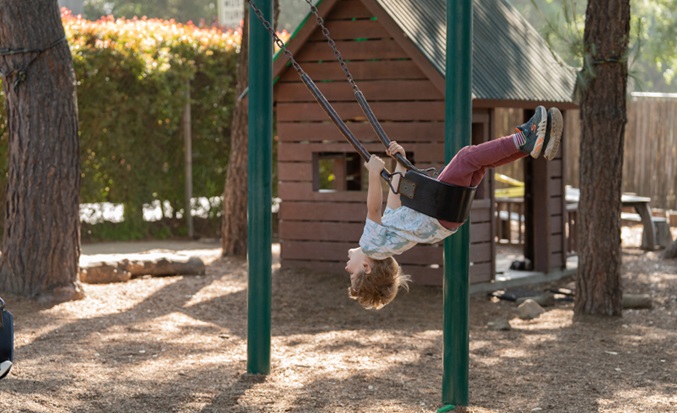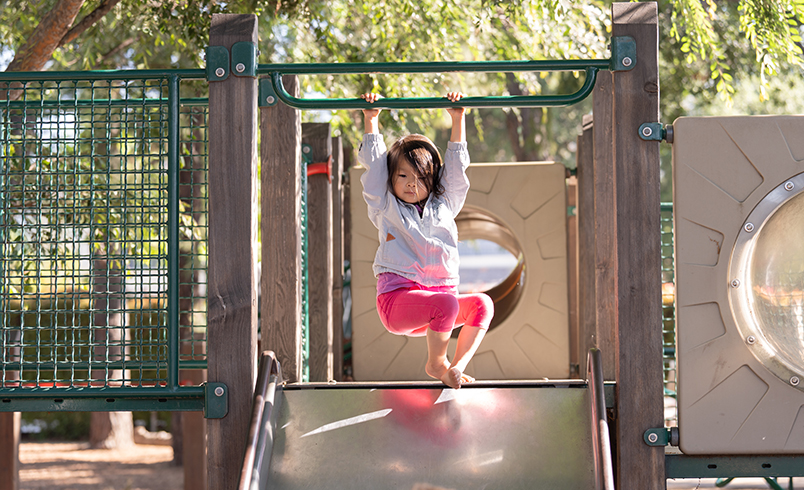Outsmart the Wiggles
| July 2023When children reach elementary school, they’re expected to sit still so they can learn. With calm bodies and minds, they’re more attentive, receptive learners. But why do so many kids have ants in their pants, and how did they get there?
Turns out, the ants are usually a result of too much stillness during the early childhood years.
The Problem of Stillness
Young children in previous generations spent much more time doing big-body play. Since the early 2000s, we have had a fundamental cultural shift away from child-directed free play towards more sedentary endeavors.
What is wrong with stillness?
First, it is making kids weak. A 2013 study out of Australia found cardiovascular endurance in children is declining at a rate of 5% per decade. In 2013, it took children 90 seconds longer to run a mile than in the 1980s, leaving kids with 15% less cardiovascular fitness than their parents.
Additionally, a 2014 study from the United Kingdom found that core strength in children is eroding. Between 1998 and 2008 core strength declined by 2.6% per year, and between 2008 and 2014 it declined by 3.9% per year. Since these studies were published, we have had another decade and a pandemic. It is likely that the numbers are even worse now. But 21st century children’s bodies and brains need the same thing previous generations needed—to move.
Children begin life dominated by the right side of their brains, and as they grow, they develop a more balanced brain when the right and left hemispheres begin to converse and coordinate. This balance helps kids operate in a more logical and less emotional world. The very best way to develop this cross-brain conversation is through movement—the bigger the better. Simply put, big body play builds brains.
As well as laying the groundwork for academic achievement, big movement organically builds cardiovascular and core strength. It puts pressure on the joints and places the head in different planes to support proprioceptive and vestibular development.
Aerobic Movement
Consider aerobic movement. Aerobic movement improves cardiovascular fitness because the large muscles in the body force more oxygenated blood to circulate, improving the strength and capacity of the heart and lungs. That same aerobic movement also impacts the brain by causing the release of Brain Derived Neurotropic Factor (BDNF), a chemical that builds new neural connections, particularly in the area associated with executive function. BDNF improves cognition, memory, and motivation, improving children’s quality of play and communication skills.
In generations past, cardiovascular endurance was built in traditional play whether it was Kick-the-Can, Red Rover, pushing the merry-go-round at the playground, or riding bikes for hours. When kids don’t move enough, they don’t build cardiovascular fitness. Not only is their health compromised, but their behavior is affected, and later learning is harder.
Core Strength
Core strength is also critical in children’s development. With a strong core, children have smooth-moving and controlled appendages. For adults, core strength is vital to functional movements like swinging a golf club and carrying laundry baskets. For children, a strong core encourages positive participation in active play and in turn, supports their future academic success. A child with poor core strength will struggle with both, leading to a loss of confidence in play and academic struggles later in life.
When children get to elementary school, they are expected to spend extended periods of time seated at a desk. Without a strong core, sitting is uncomfortable, leading to shifting and wiggling—those dreaded “ants in the pants”—that are a distraction and make attentiveness in class difficult.
In previous generations, children built core strength in all kinds of play: swinging, sliding, climbing, building forts, digging in the sand, and playing on the monkey bars. But children who do not move enough cannot build this strength. They will wiggle in discomfort, making school tasks harder than they need to be.
Too much stillness also reduces the opportunity for the body to explore its surroundings, feeding essential information to the brain. As a culture, we tend to treat the body as simply a vessel for carrying around our hard-working brains. In truth, the brain needs the body in order to develop. Movement informs and shapes the brain in important ways that facilitate learning.
Sense of Force
Consider the proprioceptive system, housed in the joints, giving children a sense of force. Through a variety of play experiences children begin to grasp the difference between the amount of force needed for petting a kitten versus kicking a ball. They learn the amount of force they need to use for squishing modeling clay versus the gentle pressure needed when putting pencil to paper without breaking the tip.
When children don’t push, pull, jump, or climb, they do not put pressure on their joints. This limited physical experience thwarts the development of the proprioceptive system and restricts their understanding of force, leading kids to use too much force (hitting instead of tagging), or too little (tapping instead of pressing). Without enough movement to develop the proprioceptive system, children’s brains will search out this stimulus in other less productive ways: slamming into walls and floor, excessive roughhousing, and pushing heavy things over. These actions may look like bad behavior, poor self-regulation, or a lack of self-control. But, more likely, children demonstrating these behaviors are desperately seeking essential information about the body and how to use it. Movement is the only source of that critical information.
Balance and Movement
When children are still, they spend a great deal of time upright. But children need their heads to move in multiple planes and directions to develop their vestibular system, within the inner ear. This is the sense of balance and movement. When this system is well-developed, children innately know that while they’re moving, the rest of the world is still. This sense is best developed through spinning, swinging, sliding, hanging upside down, log rolling, and somersaulting. These movements hone children’s focal point, the ability to hold a steady gaze while in motion, helping them feel stable.
Adults who have had damage to their vestibular system from infection or stroke will tell you it feels like the world is constantly moving. Imagine being a child trying to climb the ladder on a slide when the ladder seems to be moving. Later in the classroom, a weak focal point will cause letters and numbers to jump around on the page or board, making reading, writing, and math hard to master.
Additionally, the vestibular system is part of the data management center. Children are bombarded with information all day long, but a strong vestibular system helps them filter the important from the unimportant. Without that filtering, all sensory information is equally important. The hum of the air conditioning is the same as the teacher’s voice, and the world is overwhelming. The only answer is to shut down. The only way to turn the vestibular system back on is to move—a lot—in many different ways.
Instead of shutting down, some children with weak vestibular systems will be in constant motion, running or spinning, to feed their brains the information they desperately need to hone a focal point and manage data. And what does this motion look like in a classroom? It looks like the child is experiencing bad behavior, an inability to self-regulate, and poor self-control. In reality, their brain is screaming for information about the body and how to use it. Healthy proprioceptive and vestibular systems build the foundation for rich play and learning.
Ideas for Play:
Cardiovascular endurance:
Tag games: There are countless versions of tag, and children love them all. Even toddlers love a good game of chase.
Core strength:
Any play that incorporates the whole body improves children’s core strength, from bear crawling to bike riding to swimming. Playgrounds provide opportunities for building forts out of stumps and branches or climbing trees. Full body work is core strengthening.
Proprioceptive:
Heavy chores and heavy play strengthen children’s proprioceptive systems. Here are some examples: taking out the trash, stomping the recycling, carrying laundry baskets, running uphill, hanging from monkey bars, climbing, carrying buckets of sand or water, pushing or pulling a full wagon or sled.
Vestibular:
Activities that build a strong vestibular system: Swinging, sliding, hanging upside down, spinning, riding scooter boards, sledding, pushing wagons, doing somersaults, log rolling, cartwheels, bear crawling.
Conclusion
Big-body play is cheap. It is innate. It is available whether you have a big space or a small space. It is what children crave and it is what children need.
Sadly, children are paying the price for a lack of play with increased weakness, more behavior challenges, and a harder time in school.
Let’s get out of the way and let the kids play!

